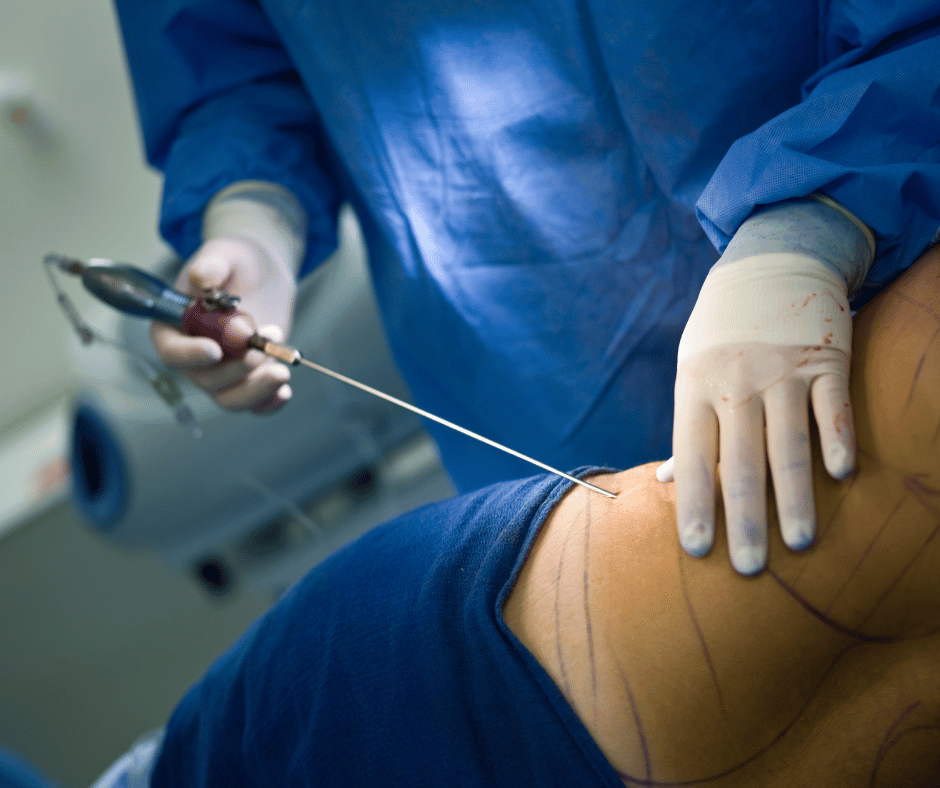Liposuction, also known as lipoplasty, is a surgical procedure designed to remove excess fat deposits from specific areas of the body, such as the abdomen, hips, thighs, buttocks, arms, and neck. This procedure not only enhances body contour but also contributes to overall aesthetic improvement. The success and safety of liposuction largely depends on the equipment used.
In this article, we will provide an overview on the most common aspects of the equipment used in liposuction procedures, as well as general guidelines for their classification and grouping in the Mexican healthcare system’s framework.
Components of Liposuction Equipment
Liposuction equipment has a variety of devices available. Each device has its own characteristics depending on the technique that the device was manufactured for (traditional liposuction, Ultrasound-Assisted Liposuction, Power-Assisted Liposuction, Laser-Assisted Liposuction, etc.) The most common shared key components can be summarized in three categories: the aspiration device, the handpiece and the cannulae.
Aspiration Device: Also known as suction pump, this device is the core element of liposuction devices. Aspiration devices consist of several parts that work in tandem to facilitate effective fat removal. The primary component is the vacuum pump, which generates the negative pressure necessary to aspirate fat. This pump is often either a rotary vane or diaphragm type. The vacuum pump connects to a system of medical-grade silicone or PVC tubing, designed to withstand the pressures involved in the procedure while maintaining flexibility and sterility. The tubing leads to a collection canister, usually made from glass, autoclavable polycarbonate or stainless steel, ensuring durability and ease of sterilization. The canister serves to collect the aspirated fat and fluids, preventing any backflow or contamination.
Handpiece: Handpieces serve as the interface between the surgeon and the cannula. They provide the control and precision necessary for effective fat removal and are designed to enhance the surgeon’s comfort and efficiency. Handpieces are ergonomically designed to fit in the surgeon’s hand, reducing fatigue during lengthy procedures. Many handpieces feature a textured surface or grip to prevent slipping, even when the surgeon’s hands are wet or covered with gloves. Modern handpieces are designed to be compatible with a variety of cannulas and aspiration devices; this modularity enables surgeons to switch between different cannulas as needed during the procedure without significant downtime. The connection mechanism is usually a quick-release or threaded coupling, ensuring a secure and stable attachment. Depending on the type of technique used by the equipment, handpieces may be equipped with motorized components that provide oscillating or vibrating movements to the cannula. These power-assisted handpieces reduce the physical effort required by the surgeon and enhance the efficiency of fat removal.
Cannulae: The primary tools used to extract fat during liposuction. They vary significantly in terms of design, materials, and specific applications, each suited for different aspects of the procedure. Stainless steel cannulae provide the strength required for repeated use and the rigidity needed to effectively penetrate and maneuver through adipose tissue. Titanium cannulae, although less common, offer several advantages, including being lighter than stainless steel and non-magnetic. This reduced weight can decrease surgeon fatigue during lengthy procedures, and the non-magnetic property is beneficial in certain surgical environments. Plastic cannulae made from materials such as polycarbonate or PEEK are used in specialized situations where flexibility is required. While not as durable as metal, these plastic variants can be advantageous for delicate or intricate procedures.
Cannulae come in a wide range of designs, each tailored to specific procedural needs. Standard cannulae are straight tubes with either blunt or sharp tips, used for general-purpose fat removal from larger body areas such as the abdomen or thighs. Microcannulae, with their smaller diameter, are designed for precise fat removal and fine-tuning, particularly in delicate areas like the face or neck. Spatula-tipped cannulae feature a flat, spatula-like tip, ideal for superficial liposuction and smoothing out irregularities. Angled cannulae, with their bent or angled tips, provide better access to hard-to-reach areas and improve maneuverability during the procedure. Vented cannulae have multiple openings along the sides, enhancing suction efficiency and reducing the risk of clogging. Basket cannulae, with their basket-like pattern of openings at the tip, offer gentle fat removal, minimizing the risk of damage to surrounding tissues.
Guidelines for Classification and Grouping of Liposuction Equipment
As liposuction equipment can entail a variety of components and/or accessories, the common general approach is to classify them under Class II medical devices in the context of Mexican regulatory framework. However, as detailed by our Classification and Grouping Ultimate Guide, depending on the type of technique or technology used, handpieces, cannulae and accessories are recommended to go through their own analysis to verify if grouping is viable with the aspiration devices. For instance, if the handpieces and cannulae are designed to be used with different kinds of aspiration devices, a separate sanitary registration process will be needed in order to obtain a registry. This derives from the general considerations outlined in order to group products:
- Same intended use
- Same manufacturer
- Same distinctive denomination (commercial name). Multiple models of a device family, each with distinct configuration options, are eligible for joint registration. (i.e. touch screen options or differences in size/vacuum power).
If you have any inquiries about the registration of liposuction equipment or any other medical devices in the Mexican market, feel free to contact us at contact@veraqueconsulting.com, or check our guidelines and checklists.

